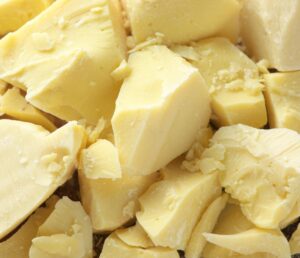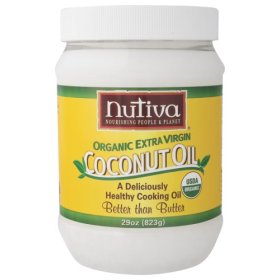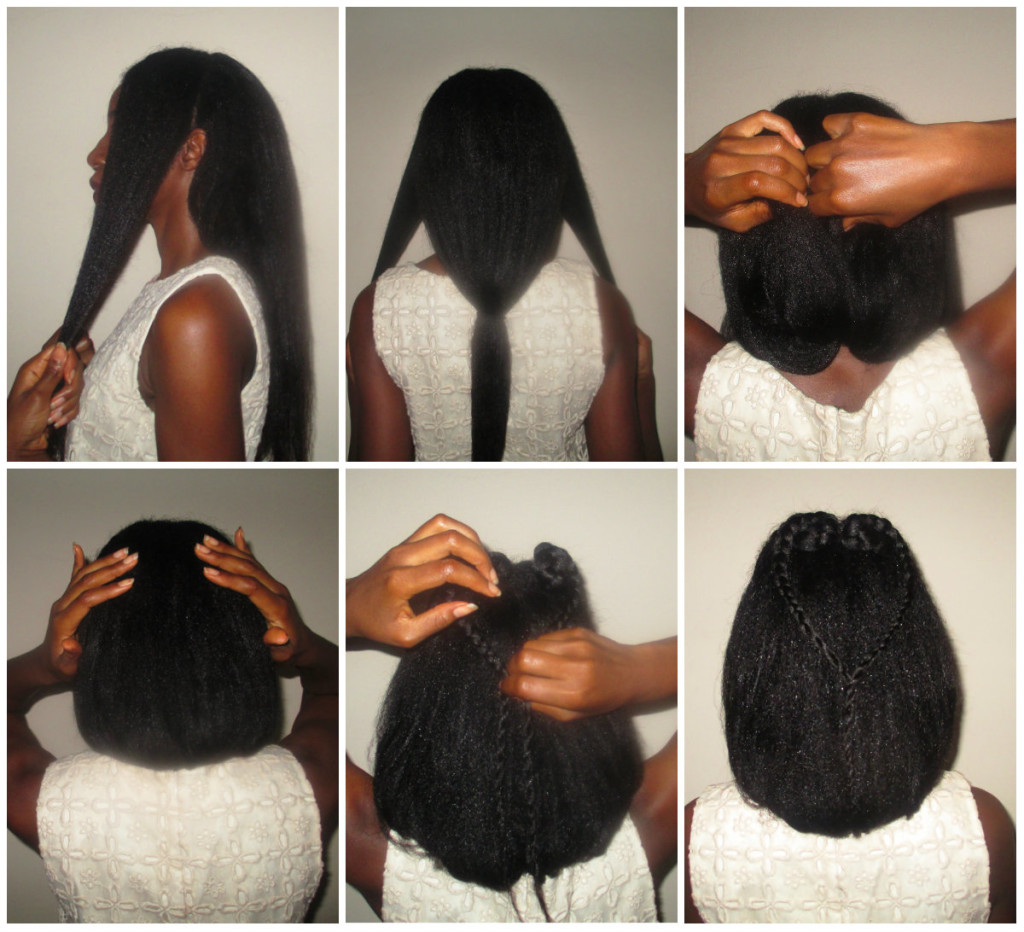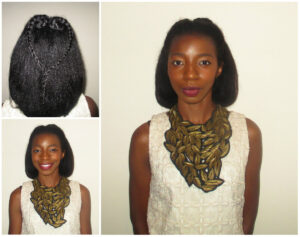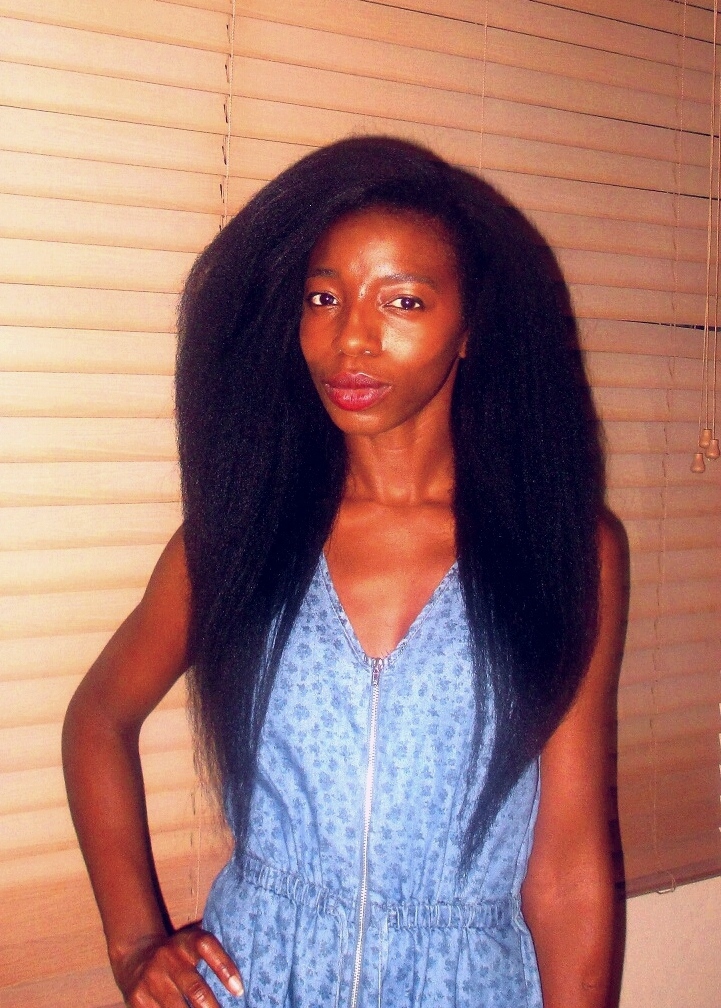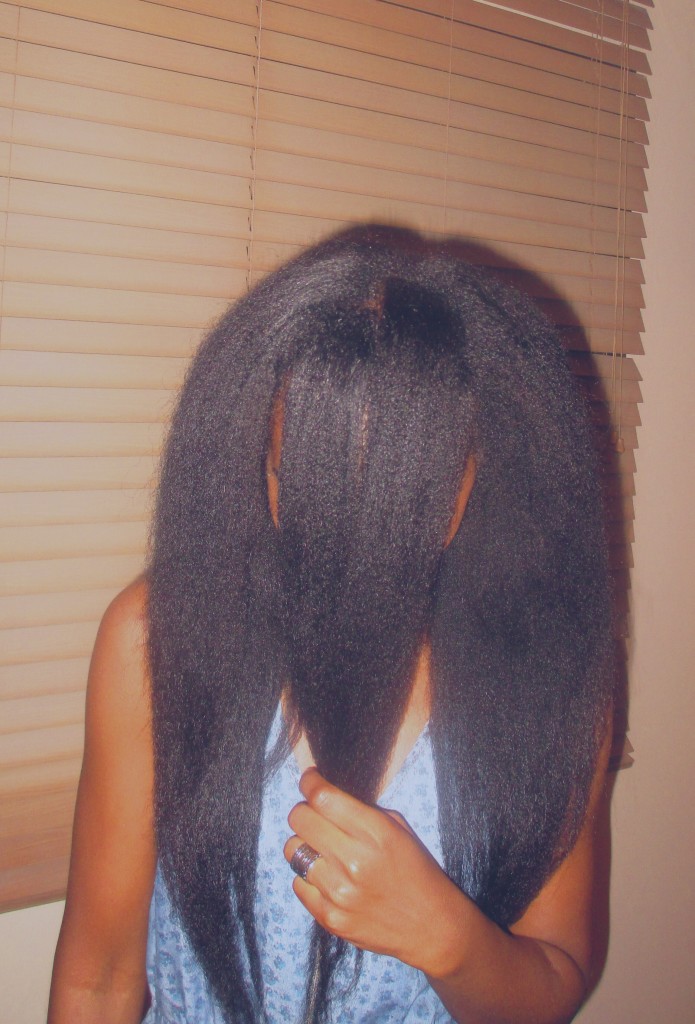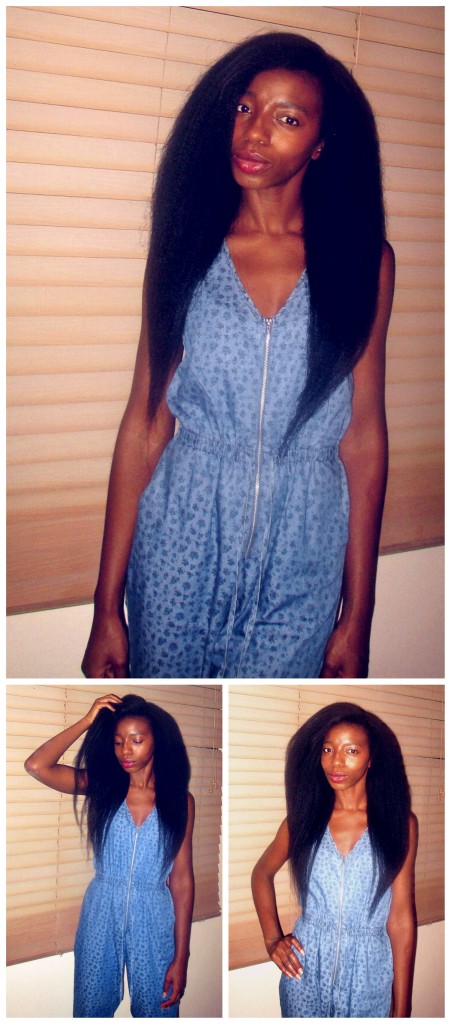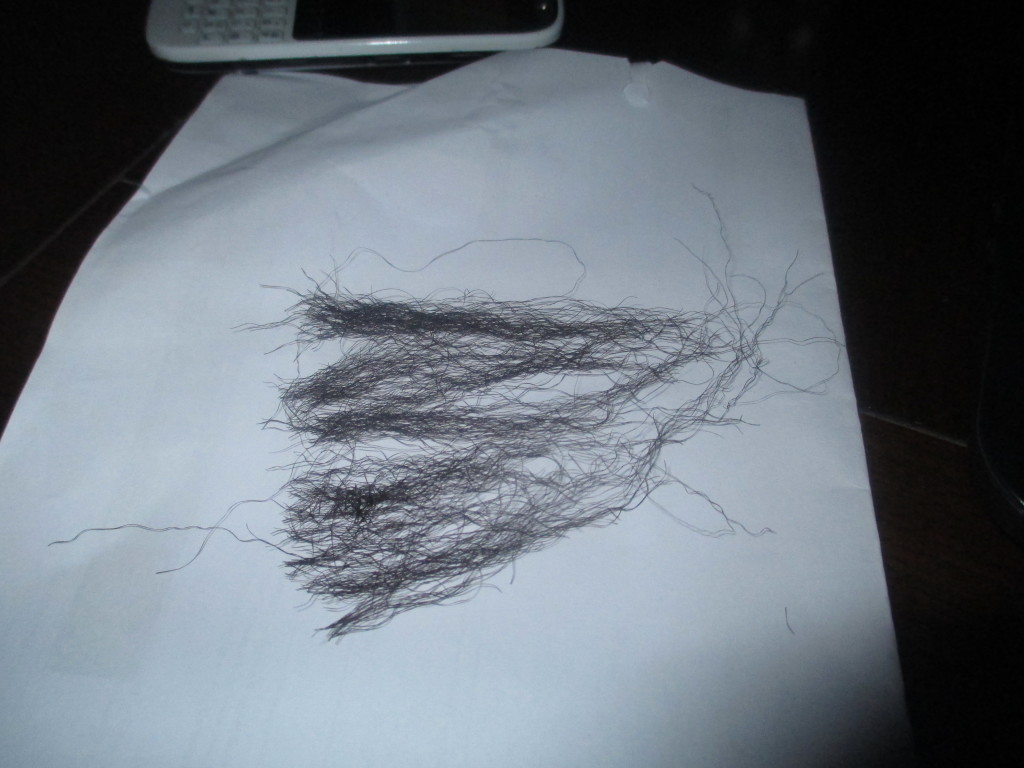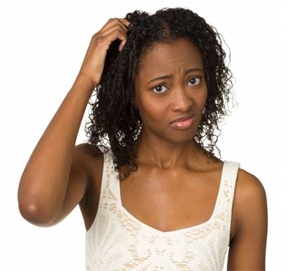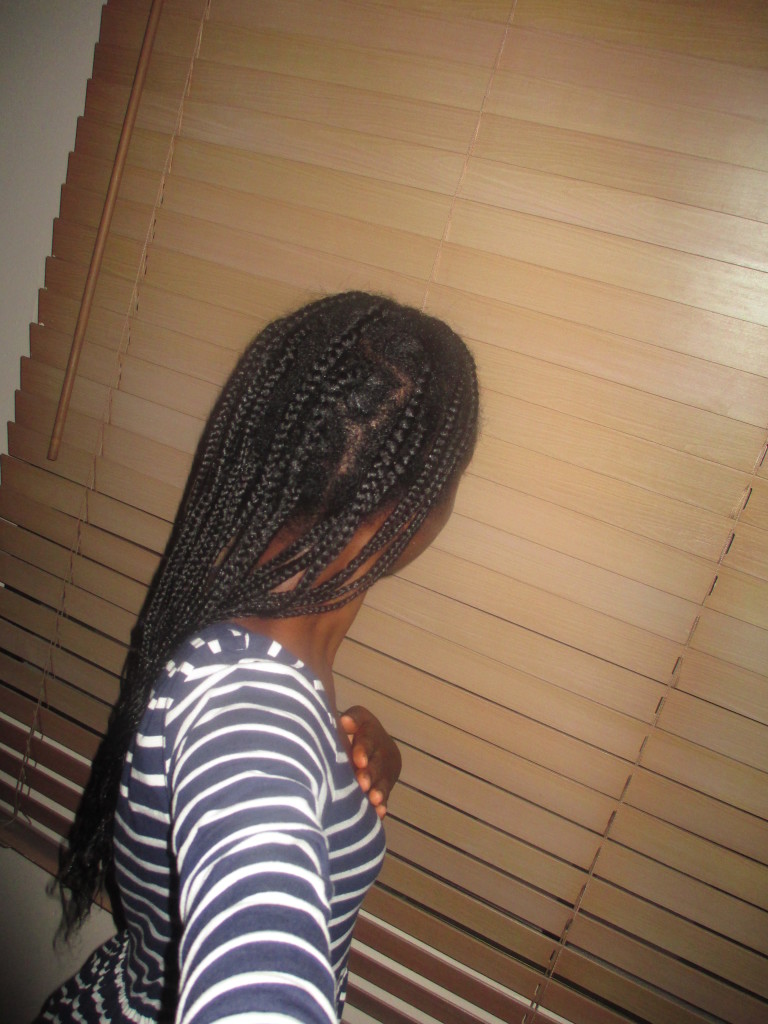Hello ladies
Its no secret that I used wigs to grow my hair from shoulder length to bra strap length. Even though I have reached my hair length goals, I still wear wigs as a part of my healthy hair regimen. In this blog post I intend to discuss why wigs work for hair growth and then I will explain the various elements of my wig regimen.
Why Wigs Work for Hair Growth
1) Low Manipulation
Combing, styling, washing, conditioning, detangling etc are all examples of manipulation.
Our hair, whether natural, texlaxed or relaxed thrives when manipulation is kept to a minimum. This is why a lot of ladies notice hair retention after wearing long term protective styles like braids, weaves and wigs. When wearing these sorts of styles we are not manipulating our hair as much which means we experience less breakage and have an increase in length.
A problem with weaves and braids however is that there is a lot of manipulation required to create these styles( ie there is usually a lot of sectioning, combing and tension required to create the styles especially if you want the style to look very neat). Also these styles can lead to hair breakage if they are not installed or removed correctly.
There is a lesser degree of manipulation required to wear a wig in comparison to weaves and braids. With a wig all you have to do is cornrow or put your hair in box braids under your wig. There is no need to add extensions. Also the cornrows under the wig do not have to be too tight for neatness because you are only going to cover it with a wig.
Wigs are long term protective styles that allow you to greatly minimize how often you manipulate your hair. Using my hair as an example, when I have my hair out I wash it weekly, when I am wearing wigs however I wash my hair every three weeks and my hair is not being manipulated daily. As a result of this I experience less breakage because i am leaving my hair alone.
2) Stretching Aid
For ladies who are relaxed or texlaxed, extending the periods between your relaxer to more than 8 weeks is known as stretching.
For example, rather than texlaxing my hair every 8 weeks, I texlax every 20 weeks. I have written a post about stretching and its benefits which you can read here.
Although stretching has a multitude of benefits, it certainly has an equal amount of challenges. Managing different textures, increased risk of tangling and matting, styling challenges, breakage at the line of demarcation etc. To reduce the stress of challenges that come with stretching, wearing a long term protective style is advisable.
This is because any manipulation when you are deep into your stretch can be very difficult and time consuming. You have to be very gentle to avoid breakage at the line of demarcation. You also have to keep your new growth moisturised regularly to minimise breakage and dryness.
Wearing a wig is a great way to reduce daily and weekly manipulation when on a stretch. If you have your hair in cornrows or box braids under the wig it can make access to your scalp and moisturising and sealing easier.
My Wig Regimen Explained
. Currently, I follow this regimen from week 9 to week 20 post relaxer. My wig regimen is written in pink text.
- Hair kept in 20 box braids under Hair by Type 4 wigs.
If your hair is long enough to cornrow or put into box braids it is advisable to do this before wearing your wig. It will make your wig sit better on your head and more importantly it will reduce daily manipulation of your own hair. Ie . There will be no need for daily detangling or combing. I choose to wear my hair in box braids because I find it easier to create myself than cornrows.
- Undo box braids, detangle, shampoo and condition every 3 weeks
- Deep condition with heat for 30 minutes after washing (moisture and protein conditioners used)
- Use leave in conditioners after deep conditioning (moisture and protein leave-ins used)
- Air dry after every wash
I do not wash my hair weekly whilst it is under my wig. After a three week period however, my box braids will begin to matt especially at the base. At this point I have to undo the box braids to prevent my hair from locing. This gives me a chance to thoroughly detangle my hair, clean and condition my hair to boost its strength and moisture levels.
- Put my hair back in 20 box braids ( which I keep for 3 weeks)
After my hair is fully dry on my wash day, I put it back into the box braids and put my wig back on.
With braids and weaves, it is advisable to give your hair a minimum of one week break before re-installing another braid or weave style. This is to give your scalp a chance to recuperate from the weight and stress of the extensions. With wigs however you do can simply carry on wearing your wig because your scalp wouldn’t have been stressed in the first place.
During the 3 weeks when my hair is in box braids under my wig I do the following:
- Moisturise and seal the box braids 2 times a week
- Mist the box braids and my wig cap lightly every morning ( if I think my hair needs it)
When I have my own hair out, I have to moisturize and seal about 4 times a week to keep my hair feeling soft.
With my wig regimen, I only have to moisturise and seal twice a week. Because my hair is under my wig for most of the week, the moisture is not evaporated from my hair as quickly as when my hair is out. This saves me so much time and cuts manipulation by at least 90%.
When I have my hair out, moisturising and sealing takes me about 30 minutes because I have to section my hair then detangle and apply the product. When my hair is in box braids I simply rub the products on my palms and apply it to the box braids or spray on my hair mist followed by a little amount of oil. It takes me 5 minutes max.
- Oil scalp once a week
Having my hair in box braids gives me access to my scalp and makes applying oil to it for scalp massages easier and less time consuming.
- Remove wig and sleep with hair covered with a satin or silk scarf every night
- I keep my scalp clean by wiping it gently with baby wipes and very warm water once a week.
A clean scalp is important for healthy hair growth. I avoid washing my hair weekly whilst on my wig regimen because I am trying to decrease manipulation as much as possible . However, I have to find other means to clean my scalp. By wiping the exposed part of my scalp I can remove some of the dirt, debris and shed skin. Being able to remove my wig makes this task much easier.
I hope this blog has helped to provide more details on my wig regimen and why it works.
I do not want to give braids and weaves a bad reputation. They can be protective if installed and removed correctly and you take care of your hair whilst wearing them. However I believe that wigs are a better option because they are less invasive, requires a lot less manipulation to wear and remove and give you complete access to your hair. Combined with some good hair care practices, wearing wigs can be a route to longer and healthier hair.
I haven’t decided what my next blog post will be yet but I am sure I’ll think of something to share and as always I hope you’ll stop by soon.
Happy hair journey
x
Lade
Learn | Change | Grow


